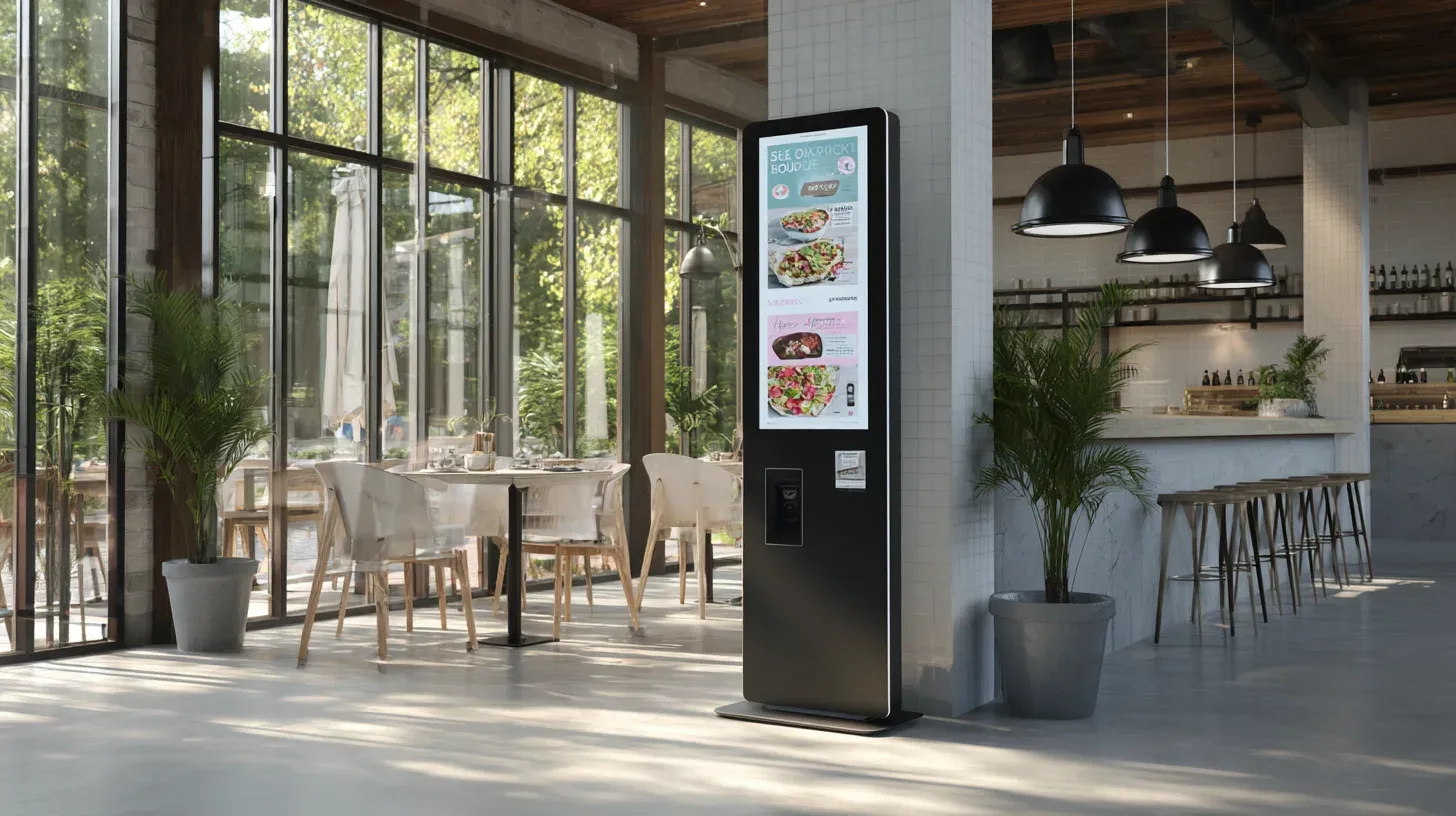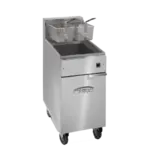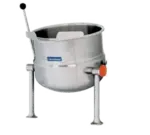
Restaurant Tech Trends: Self-Ordering Kiosks, QR Menus & Beyond
The restaurant industry is undergoing a digital revolution, with technology fundamentally transforming how customers interact with restaurants and how operations are managed. From self-ordering kiosks to QR code menus, restaurant automation is not just a trend—it's becoming the standard. As consumer expectations shift toward speed, personalization, and contactless service, restaurant technologies are evolving to meet the demand. This article explores the key innovations reshaping dining today, focusing on self-service kiosks, QR menus, and what's next in restaurant automation.
The Rise of Restaurant Automation
Restaurant automation refers to the integration of digital tools and automated systems to streamline tasks traditionally handled by human staff. These can range from taking orders and processing payments to managing inventory and preparing food.
While automation in the restaurant industry once felt futuristic, it's now a core element of modern operations. The restaurant automation system can help owners reduce labor costs, improve order accuracy, and enhance the customer experience.
Major fast food chains like McDonald's and Panera Bread were among the first to adopt this technology at scale. But today, automation is accessible even for small to mid-sized restaurants, thanks to the rapid development of cost-effective software and hardware solutions.
Self-Ordering Kiosks: Convenience at Your Fingertips
Among the most visible trends in restaurant automation is the adoption of self-ordering kiosks. These interactive touchscreens allow customers to browse the menu, customize their meals, and pay—without waiting in line or interacting with staff. A restaurant kiosk enhances operational efficiency while giving guests greater control over their dining experience.
Key Benefits of Self-Service Kiosks:
- Reduced wait times: By distributing order placement away from the counter, kiosks reduce bottlenecks during peak hours.
- Increased average check size: Customers using kiosks often spend more, thanks to effective upselling prompts and visual menu displays.
- Improved order accuracy: With customers inputting their own orders, there's less chance for miscommunication.
- Labor optimization: Staff can focus on food preparation and customer service rather than order entry.
According to industry studies, restaurants using self-service kiosks often see a 15–30% increase in order size. For businesses struggling with staffing shortages or high labor costs, implementing a self-service kiosk can significantly boost profitability and efficiency.
QR Code Menus: Contactless and Convenient
Another major development in restaurant technologies is the widespread use of QR codes for restaurant menus. These scannable codes, which direct diners to digital menus, became especially popular during the COVID-19 pandemic—and they’ve stayed relevant long after restrictions eased.
With QR code menus, customers can simply scan a code using their smartphone to access a full, interactive menu. These menus often include item descriptions, images, allergy information, and the ability to place orders or pay directly through the platform.
Why QR Menus Are Here to Stay:
- Contactless experience: Reduces the need to handle physical menus, enhancing hygiene and safety.
- Easy updates: Restaurants can instantly change menu items or prices without printing new menus.
- Data collection: QR systems can track customer behavior and preferences, offering insights into popular dishes or peak times.
- Sustainability: Eliminates the need for printed menus, reducing paper waste.
While QR code menus initially served a public health function, they’ve proven to be a valuable part of the restaurant self-ordering system. Combined with mobile ordering and payment integration, QR codes have unlocked a new level of autonomy and convenience for guests.
Integrating Tech Into the Dining Experience
The shift toward automation doesn’t end with kiosks and QR menus. The broader landscape of restaurant technologies includes AI-powered systems, smart kitchen equipment, mobile apps, and loyalty programs designed to create a seamless end-to-end experience.
Examples of Emerging Restaurant Technologies:
- AI-powered drive-thrus: Voice recognition systems can take orders, suggest menu items, and route requests to the kitchen automatically.
- Robotic food runners: Some restaurants are experimenting with robotic waitstaff that deliver food to tables.
- Inventory automation: IoT-enabled sensors and software automatically track stock levels, reducing food waste and improving purchasing decisions.
- Dynamic pricing: AI tools analyze demand patterns to adjust menu prices in real-time for optimal profitability.
- Kitchen display systems (KDS): Digital screens replace traditional tickets, improving speed and accuracy in food prep areas.
As more restaurant automation systems integrate across front- and back-of-house operations, the results are tangible: faster service, better consistency, and smarter decision-making.
Balancing Technology with Hospitality
Despite the rise of automation, successful restaurants understand that technology should enhance—not replace—the human touch. Dining out remains a social and sensory experience, and customers still expect warmth, attentiveness, and personalization.
The best uses of restaurant automation focus on freeing staff from repetitive tasks so they can spend more time delivering high-quality service. For instance, rather than taking orders, front-of-house employees might shift into roles where they greet guests, assist with digital menus, or focus on customer satisfaction.
Challenges and Considerations
While the benefits are clear, implementing a restaurant self-ordering system comes with challenges:
- Initial investment: Kiosks, software, and staff training can be costly, especially for small businesses.
- Customer learning curve: Not all guests are comfortable with digital tools, particularly older generations.
- Maintenance: Hardware and software require regular updates and occasional repairs to remain reliable.
- Cybersecurity: Collecting customer data and processing payments digitally increases the need for robust security measures.
To succeed, restaurants must evaluate their customer base, staff capabilities, and operational needs before adopting new technology.
What’s Next: The Future of Restaurant Automation
Looking ahead, the future of restaurant automation will likely involve even greater personalization, integration, and predictive intelligence. Imagine a dining experience where:
- A customer’s preferences are remembered from past visits.
- Menus adapt in real-time based on inventory, weather, or time of day.
- Orders are routed to smart kitchen systems with minimal human intervention.
- Loyalty points are automatically earned and redeemed with mobile payments.
These scenarios are already being tested. As machine learning and AI evolve, automation in the restaurant industry will become more nuanced, predictive, and tailored to each business’s unique brand and clientele.
Conclusion
From self-ordering kiosks and QR code menus to emerging AI and smart kitchen systems, restaurant technologies are fundamentally changing the way food service is delivered. Whether you're running a fast casual chain or a boutique bistro, embracing automation can streamline operations, reduce costs, and enhance the customer experience.
The key is to strike the right balance between innovation and hospitality. Technology should empower both guests and staff—making dining more efficient, personalized, and enjoyable. As the restaurant industry continues to evolve, those who adapt early will be best positioned for long-term success.





